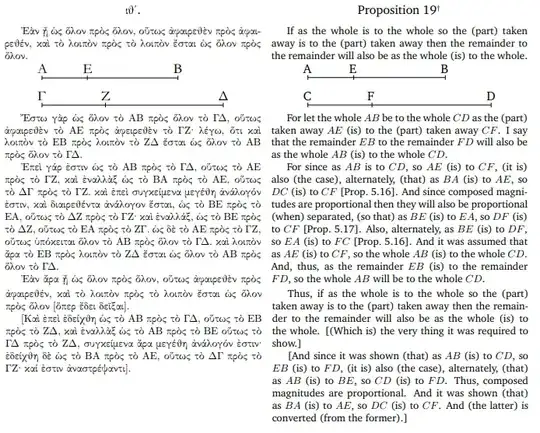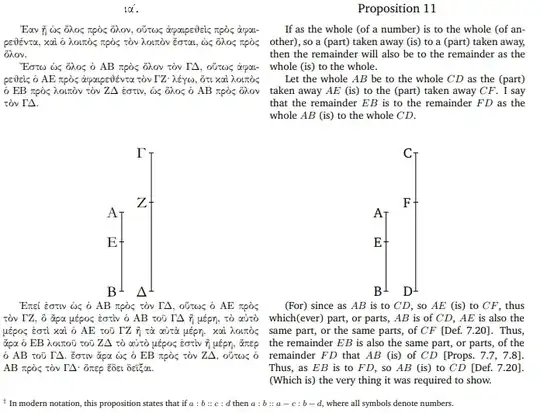In the Elements, Euclid states and proves twice that (in modern notation)
$$\boxed{\text{from } \frac{a}{b} = \frac{c}{d} \text{ it follows that } \frac{a}{b} = \frac{a-c}{b-d}}$$
– first for magnitudes (lengths), then for numbers.
Note that the proper propositions are almost identical in the Greek original:
So what does it mean that Euclid decidedly treats magnitudes (lengths) separately from numbers, even though he was obviously aware that they are (or behave) very much the same?
Furthermore, in the two proofs he makes use of different definitions, i.e. axioms, i.e. theories - but arrives at the very same result. What does this tell us about the two theories?



